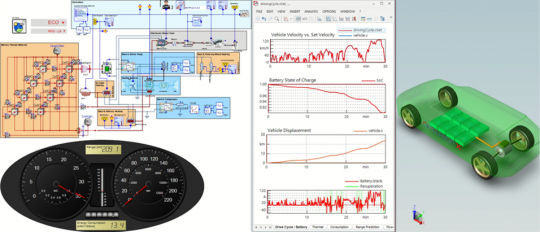HVAC Simulation for Electric Vehicles by ascs
event.germany [at] esi-group.com (event[dot]germany[at]esi-group[dot]com)
Electric vehicles (EV) are becoming increasingly popular due to their low to no emissions as well as their superior energy efficiency and driving performance. However, with electric vehicles we have to face special challenges in terms of thermal comfort in the passengers cabin. In conventional vehicles, the internal combustion engine (ICE) generates the dominant noise. In electric vehicles, the engine noise is eliminated and the heating, ventilation and air-conditioning (HVAC) unit noise becomes more prominent. This forces engineers to work quite a lot on HVAC unit noise reduction. This event is organized by ascs.
Presentation
ESI is attending this event and will present the following topic by our expert Salim Chaker:
Range Prediction and Optimization of an Electric Vehicle Battery at 1.30 pm.
Abstract:
The goal in the entire system design or development of vehicles is to find the optimal balance between vehicle performance, driving comfort and operating costs. In addition to general demands for more comprehensive and accurate results in a shorter time, the automotive industry requires virtual design and test methods to reuse powertrain models and associated data throughout the development process, including for driving performance as well as energy consumption estimation. Such methods close the gap between purely theoretical simulation results and the actual driving experience with the help of realistic simulations. In our presentation, we use the example of a battery electric vehicle (BEV) to demonstrate a specific system topology with dimensioned system components controlled by a predictive operation strategy. For energy consumption calculation and range determination, we take into account diverse influencing factors, such as vehicle characteristics (air/rolling resistance, weight, ...), driver behavior (HVAC, control, driving mode, ...) or environmental conditions (temperature, elevation profile). For this purpose, we present a cross-domain system simulation model from ESI SimulationX® and present properties and handling as well as analysis of the model (see figure). One focus of this model is the representation of a Li-Ion battery and the required cooling and heating system. Based on the WLTP driving cycle, we simulate different scenarios depending on the used driving mode (ECO, Sport, Comfort) and ambient conditions (outside temperature) and consider or discuss the average energy consumption and the achieved range.
